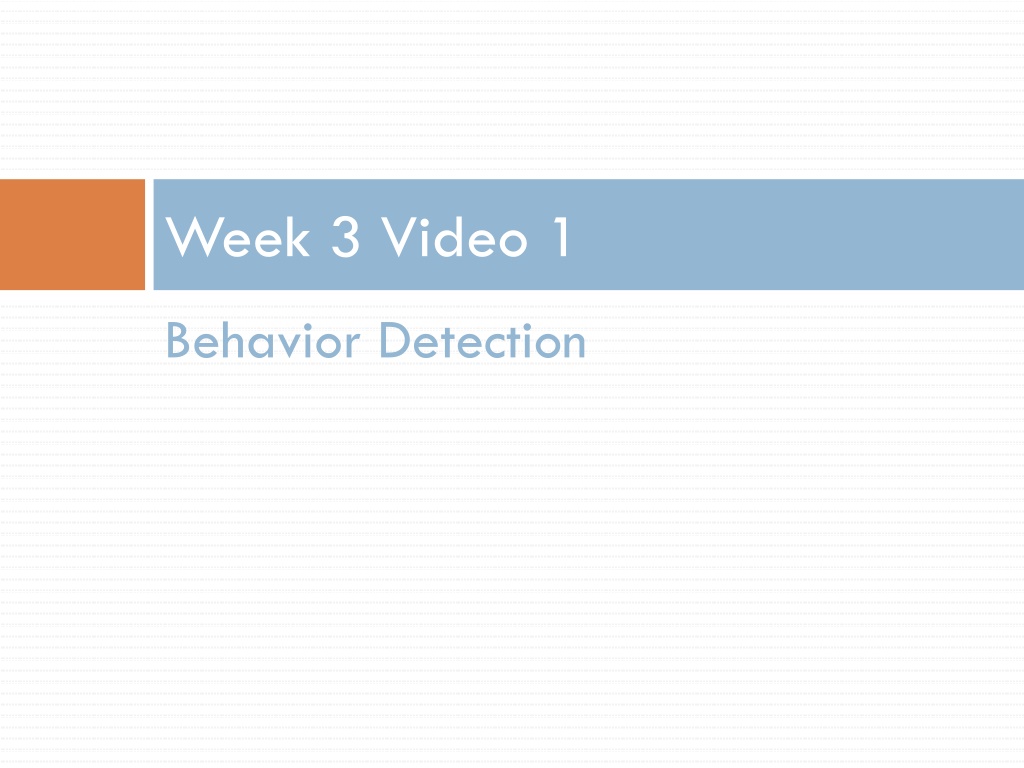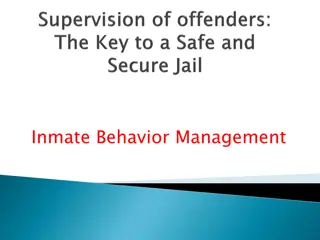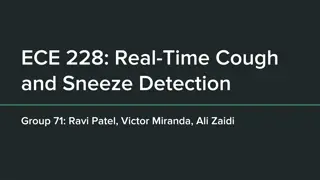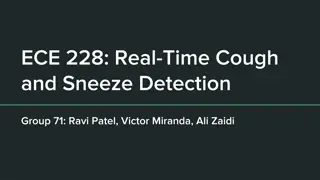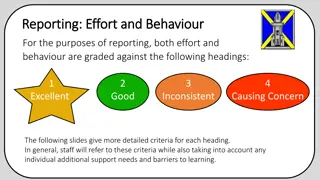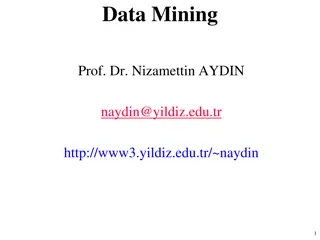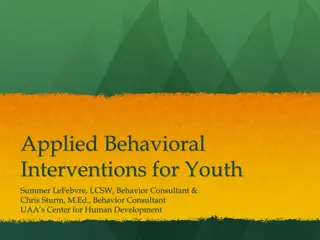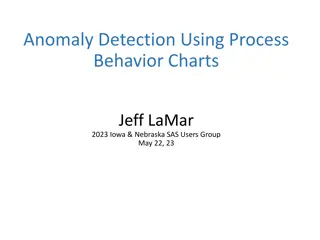Understanding Behavior Detection Models in Educational Settings
Explore how behavior detectors automatically infer student behaviors from interaction logs, such as disengaged behaviors like Gaming the System and Off-Task Behavior, as well as Self-Regulated Learning (SRL) behaviors like Help Avoidance and Persistence. Discover the goal of identifying these behaviors and their impact on learning outcomes, along with examples of Teacher Strategic Behaviors. Additionally, learn about related research on sensor-free affect detection techniques detecting emotions like Boredom and Delight.
- Behavior Detection
- Student Behavior
- Educational Technology
- Self-Regulated Learning
- Classroom Management
Download Presentation

Please find below an Image/Link to download the presentation.
The content on the website is provided AS IS for your information and personal use only. It may not be sold, licensed, or shared on other websites without obtaining consent from the author. Download presentation by click this link. If you encounter any issues during the download, it is possible that the publisher has removed the file from their server.
E N D
Presentation Transcript
Week 3 Video 1 Behavior Detection
Welcome to Week 3 Over the last two weeks, we ve discussed prediction models This week, we focus on a type of prediction model called behavior detectors
Behavior Detectors Automated models that can infer from interaction/logs whether a student is behaving in a certain way We discussed examples of this SRL behaviors in the Zhang et al. case study in week 1
The Goal Infer meaningful (and complex) behaviors from logs or in real-time So we can study those behaviors more deeply How do they correlate with learning? What are their antecedents?s And so we can identify when they occur In order to intervene
Disengaged Behaviors 6 Gaming the System (Baker et al., 2004; Paquette & Baker, 2019; Xia et al., 2021; Almoubayyed & Fancsali, 2022; Levin et al., 2022) Off-Task Behavior (Baker, 2007; Kovanovic et al., 2015; Gokhan et al., 2019) Carelessness (San Pedro et al., 2011; Hershkovitz et al., 2011) WTF/Inexplicable Behavior (Rowe et al., 2009; Wixon et al., 2012; Gobert et al., 2015) Stopout (Botelho et al., 2019)
SRL Behaviors 7 Help Avoidance (Aleven et al., 2004, 2006; Almeda et al., 2017) Persistence (Ventura et al., 2012; Botelho, 2018; Kai et al., 2018) Wheel-Spinning (Beck & Gong, 2013; Matsuda et al., 2016; Kai et al., 2018; Botelho et al., 2019; Owen et al., 2019) Unscaffolded Self-Explanation (Shih et al., 2008; Baker et al., 2013) Computational Thinking Strategies (Rowe et al., 2021)
Teacher Strategic Behaviors 8 Curriculum Planning Behaviors (Maull et al., 2010) Teacher Proactive Remediation Interventions (Miller et al., 2015) Classroom Discussion Management Strategies (Suresh et al., 2022) Asking Authentic Questions (Kelly et al., 2018; Dale et al., 2022) Uptake of Student Ideas (Dale et al., 2022)
Related problem: Sensor-free affect detection Not quite the same conceptually But the methods turn out to be quite similar Detecting Boredom Confusion Frustration Engaged Concentration Delight (D Mello et al., 2008 and dozens of papers afterwards)
Related problem: LMS and MOOC Usage Analysis 10 Studying online learning behaviors But typically not the same methods/process I ll be discussing in the next lectures More often, researchers in this area have looked to predict outcomes from relatively straightforward behaviors Due to what s visible in the log files (access to resources rather than thinking processes made visible through complex activities)
Related problem: LMS and MOOC Usage Analysis 11 That said, lots of great prediction modeling research in this area Predicting and analyzing outcomes based on when and how much learners use videos, quizzes, labs, forums, and other resources (Arnold, 2010; Breslow et al., 2013; Sharkey & Sanders, 2014; dozens of other examples)
Ground Truth Where do you get the prediction labels?
Behavior Labels are Noisy No perfect way to get indicators of student behavior It s not truth It s ground truth
Behavior Labels are Noisy Another way to think of it In some fields, there are gold-standard measures As good as gold With behavior detection, we have to work with bronze-standard measures Gold s less expensive cousin
Is this a problem? Not really It does limit how good we can realistically expect our models to be If your training labels have inter-rater agreement of Kappa = 0.62 You probably should not expect (or want) your detector to have Kappa = 0.75
Some Sources of Ground Truth for Behavior Self-report Field observations Hand-coding of logs (aka text replays ) Video coding
Advantages and Disadvantages Somewhat outside the scope of this course Important note: no matter which coding method you use, try to make sure the reliability/quality is as high as feasible While noting that 1,000 codes with Kappa = 0.5 might be better than 100 codes with Kappa = 0.8! Harder to get higher reliability for video coding than other methods A bit non-intuitive
Next Lecture Data Synchronization and Grain-Sizes
